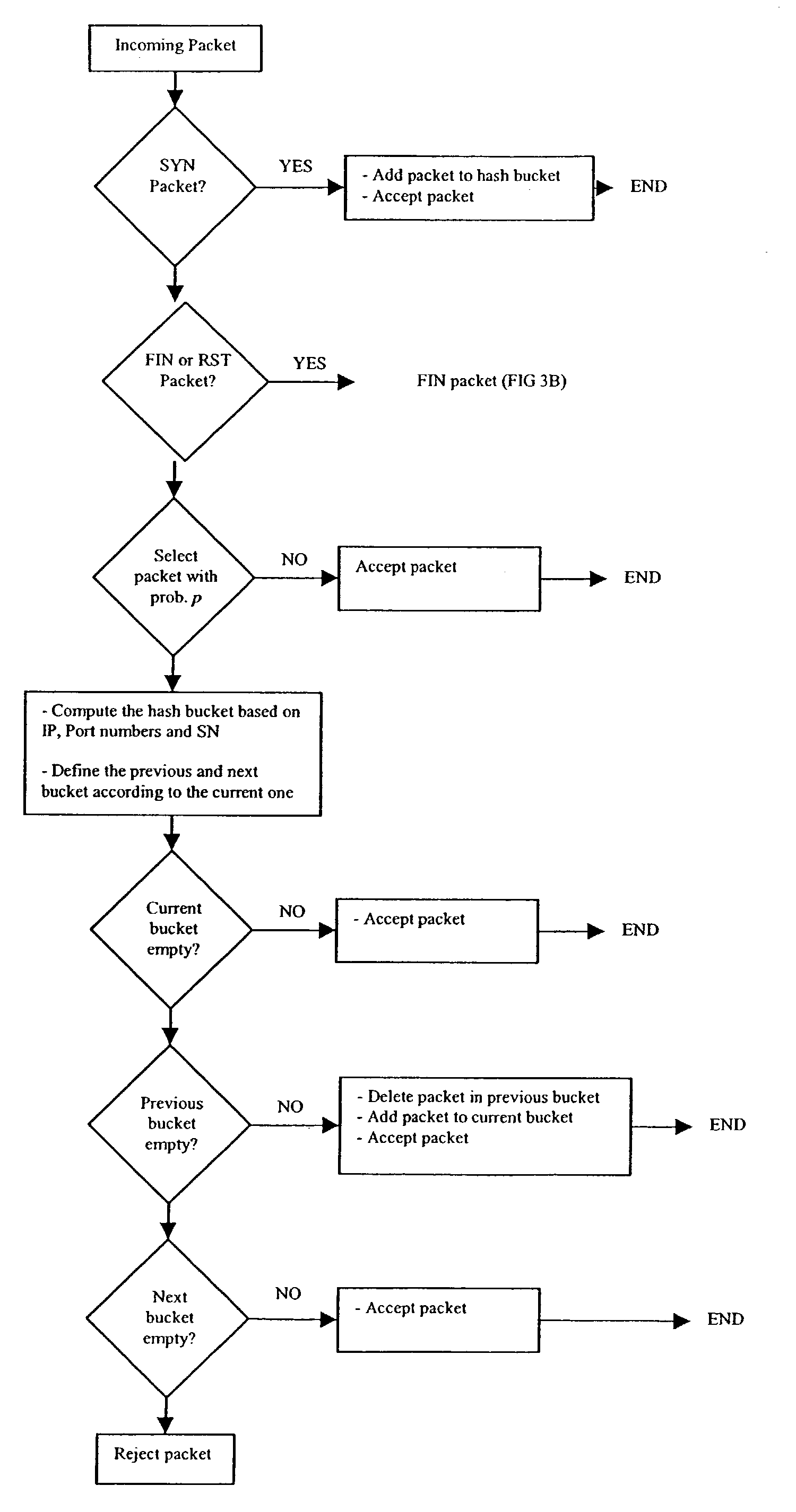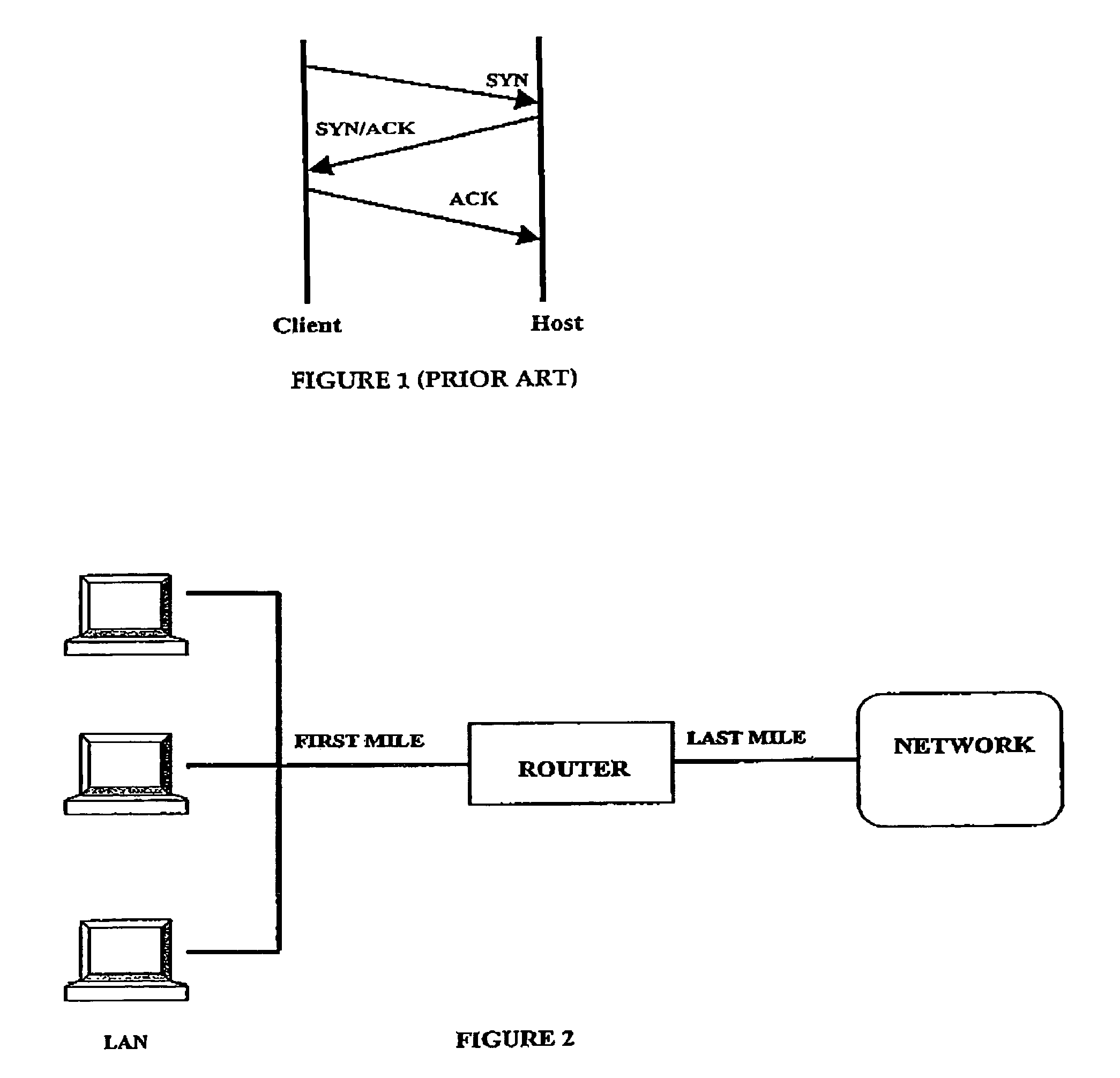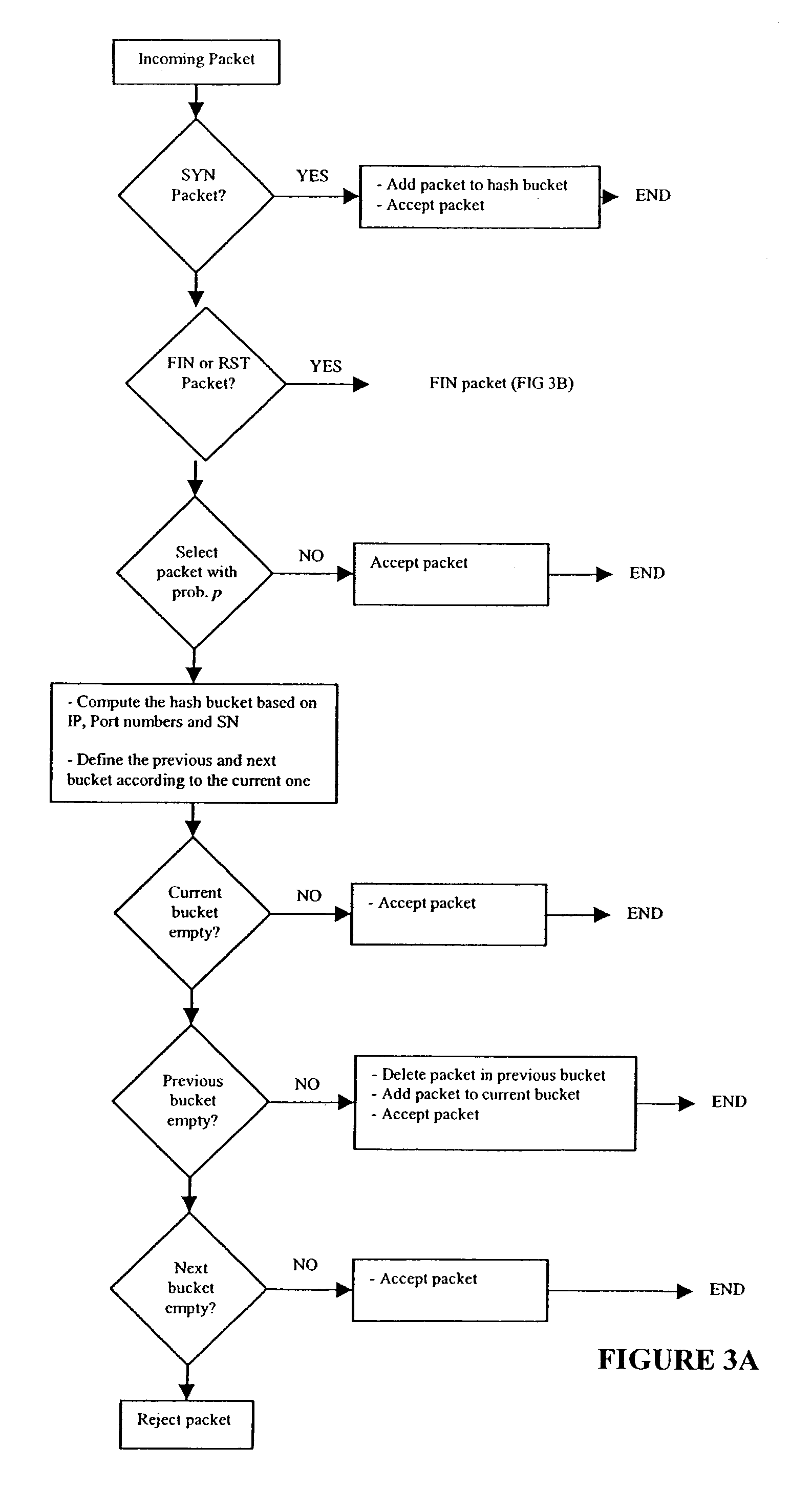Secret hashing for TCP SYN/FIN correspondence
a technology of tcp syn/fin correspondence and secret hashing, applied in the field of computer based systems, can solve problems such as severe disruption of network services, overload of victims' sites, and inability to cope with incoming traffi
- Summary
- Abstract
- Description
- Claims
- Application Information
AI Technical Summary
Benefits of technology
Problems solved by technology
Method used
Image
Examples
Embodiment Construction
[0028]FIG. 1 illustrates the TCP / IP protocol for initiating a connection from a client to a host or server. The client sends a connection initiating message (SYN) to the server who responds with a SYN / ACK message sent back to the client. The client returns an acknowledgement message which fully opens the connection.
[0029]Upon completion of a session the client sends a FIN or connection terminating message to the host or server which acknowledges the message and the server returns an acknowledgement to formally close the connection.
[0030]As discussed previously if the third leg of the connection initiating message i.e. the acknowledgement from the client to the server is not received at the server the server maintains a record of a half-opened connection and a plurality of such half-opened messages can overwhelm the server which will lead to a crash and interruption of the service.
[0031]It is anticipated that the present invention will find particular application in a router at the e...
PUM
 Login to View More
Login to View More Abstract
Description
Claims
Application Information
 Login to View More
Login to View More - R&D
- Intellectual Property
- Life Sciences
- Materials
- Tech Scout
- Unparalleled Data Quality
- Higher Quality Content
- 60% Fewer Hallucinations
Browse by: Latest US Patents, China's latest patents, Technical Efficacy Thesaurus, Application Domain, Technology Topic, Popular Technical Reports.
© 2025 PatSnap. All rights reserved.Legal|Privacy policy|Modern Slavery Act Transparency Statement|Sitemap|About US| Contact US: help@patsnap.com



